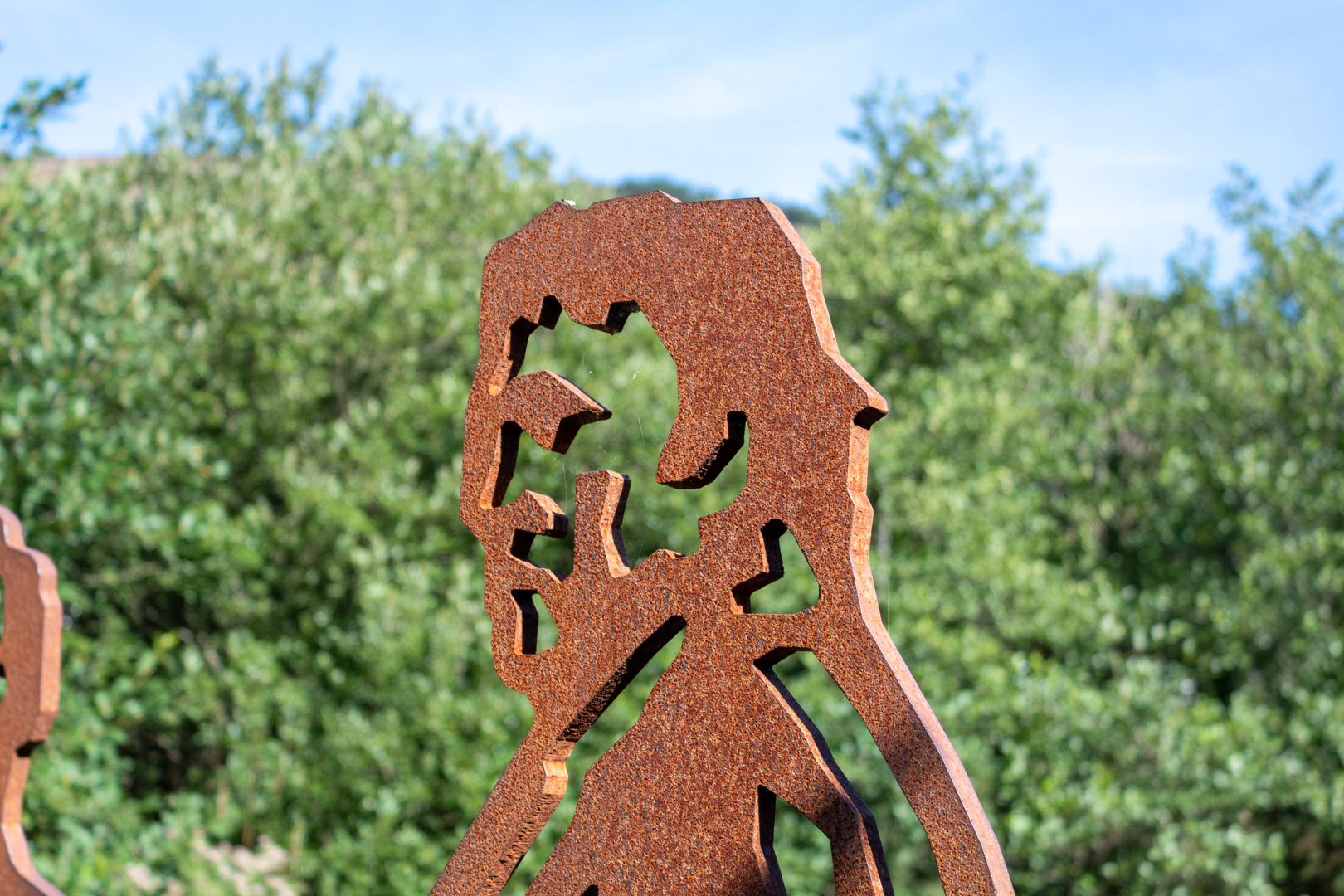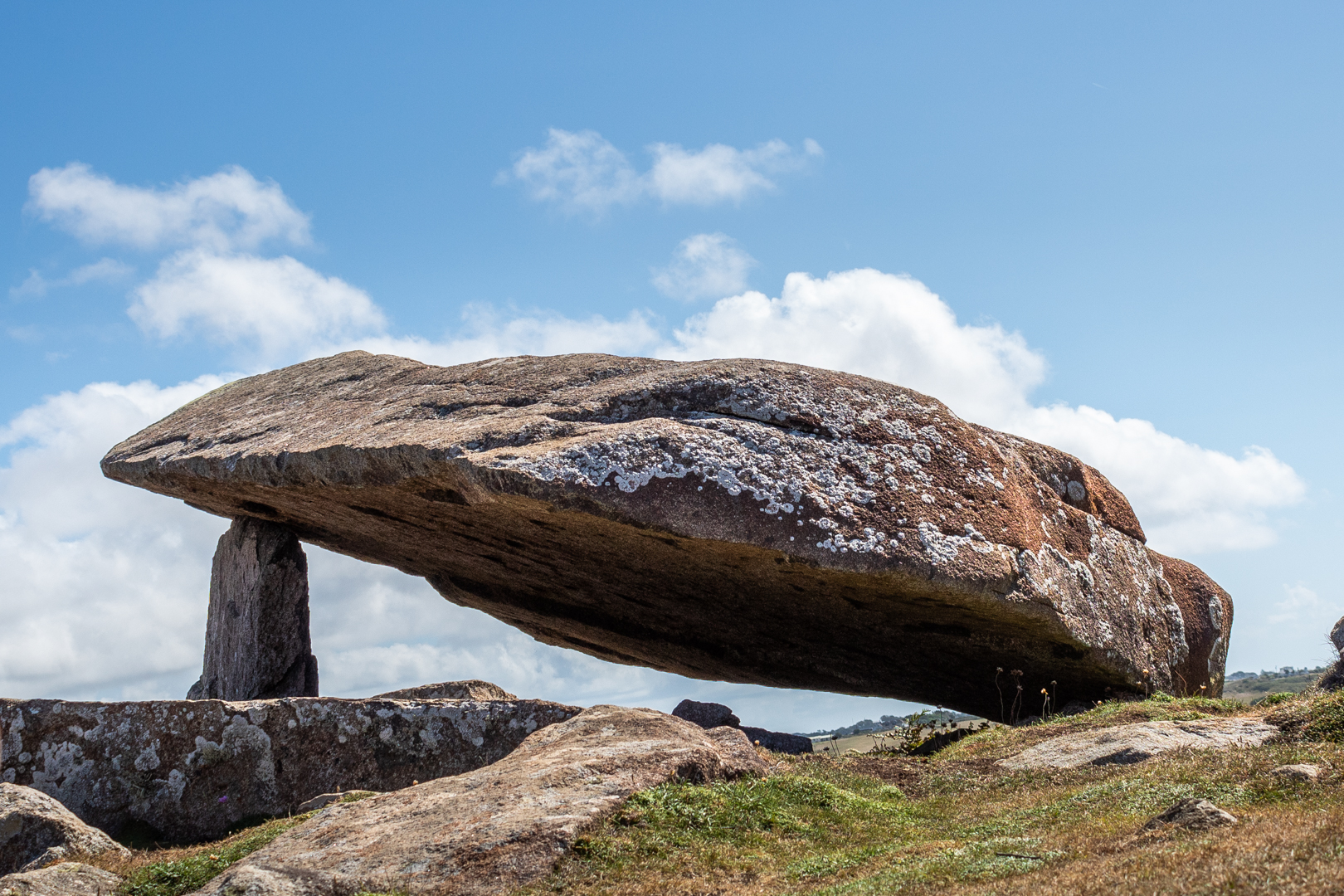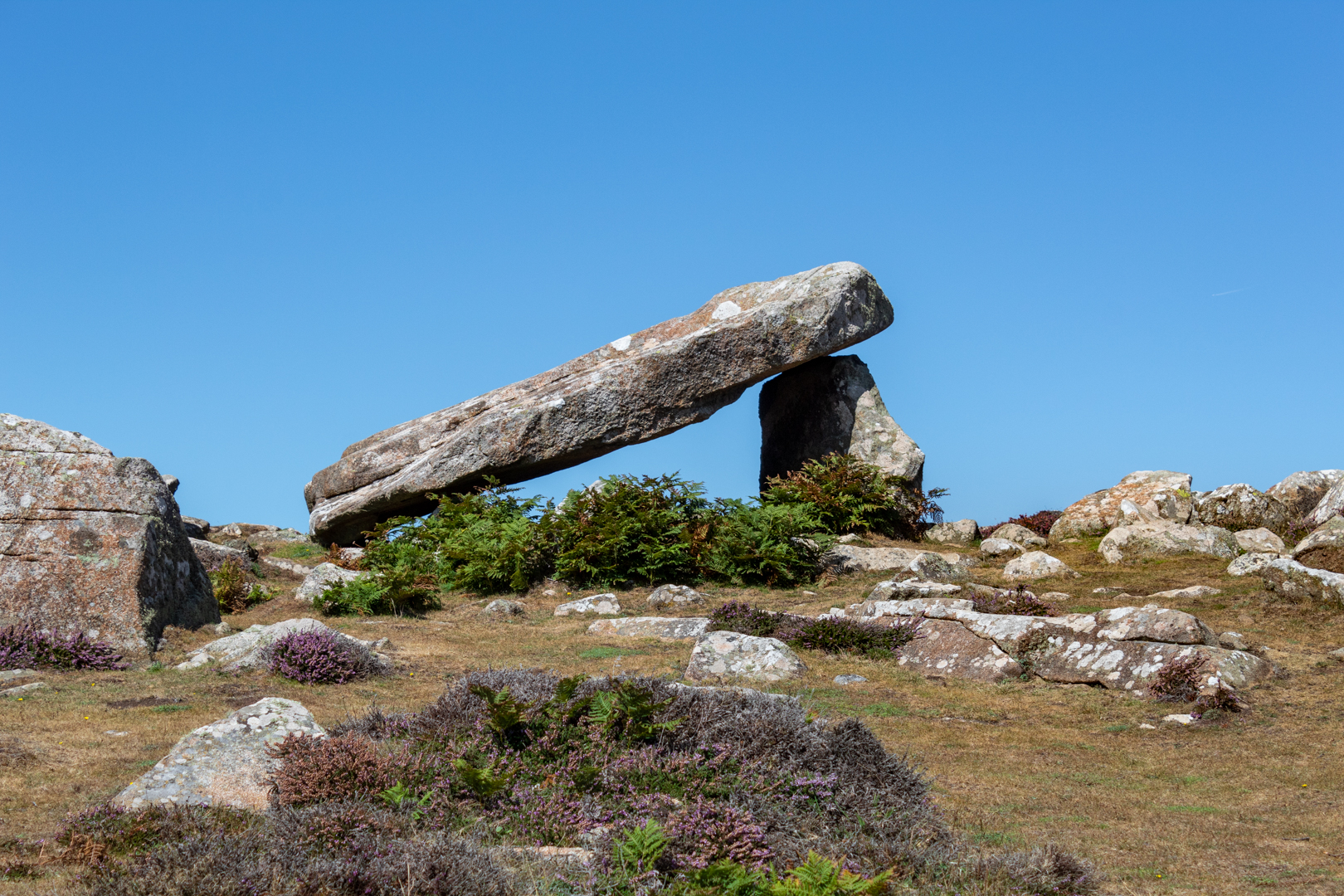An Ancient Cornish Treasure
The name Men an Toll (note the extra l) in
Cornish means "the stone of the hole",
Aptly named for this 3500-year-old bronze age structure.
Visit Date March 2023
There are many "loose" stones around this site but the Mên-an-Tol consists of three upright stones made from local granite, The two side uprights stand just over a metre high. The round stone is 1.3 metres wide and around 1.1 metres high.
There has been some discussion as to the structure being part of a stone circle but although there are outlying stones there does not seem to be any circle structure to them, of course, the site may have been changed since its "modern discovery".
Also, there have been theories that the holed stone was a capstone from a Dolmen but again I think this is unlikely.
The first archaeological examination was carried out in 1749. The plan that was drawn seems to suggest that there had been some movement of the stones but in John Tomas Blights account "Ancient crosses and other antiquities in the west of Cornwall" published in 1858 the stones are set exactly as they are today.
It is difficult to know what the structure was used for but there are many stone structures close to this site. Its nearest neighbour is Menscifa (A standing stone with writing on its surface, that will be in a later post.) which is just a few hundred yards away and the Nine Maidens Stone Circle is about a quarter of a mile further over the moor. Also in the distance you can see the more recent structure of the Greenburrow engine house (1919 - 1936).
As you would expect from a site this well known there is much folklore attributed to the structure.
It is said, If a brass pin was placed on the holed stone, questions could be answered by the movement of the pin.
In his 1932 report, Hugh O'Neil Hanchen was told by local farmers that pain in limbs or back would improve by passing through the hole. This is said to happen because a fairy or piskie (a cornish name for a pixie or elf) can make miraculous cures.
Although I guess the portly figures would not have this available to them given the size of the hole.
Another tells that some Evil piskies put a changling spell on a child which was reversed by the mother passing the infant through the hole breaking the spell.
A very well-known tale was the holed stone was said to cure rickets and children with rickets were passed naked through the hole in the middle stone from three to nine times to provide a cure.
The most popular local legend reports that a woman passing through the hole at a full moon will soon become pregnant.
Whatever the original reason for the structure we will never know but it has been put to many good uses down through the years.
Visit Information: -
Google Reference: -
50.158569483211956, -5.604591983491583
What Three Words reference: -
///chitchat.flips.chatters
OS Details: -
SW 42645 34942 Altitude:638 ft
Additional information.
This is a fine site that is easily accessible on the moor.
The road is a turn south off the B3306
There is a parking for around 4 cars close to the path of this site (50.153595163384026, -5.6149119102692655) The pathway is marked and the walk is an easy 1.2KM (15 minutes) from here. Look for a sign on the path by a a stile to cross the field.
A full list of blogs can be found at my website







































